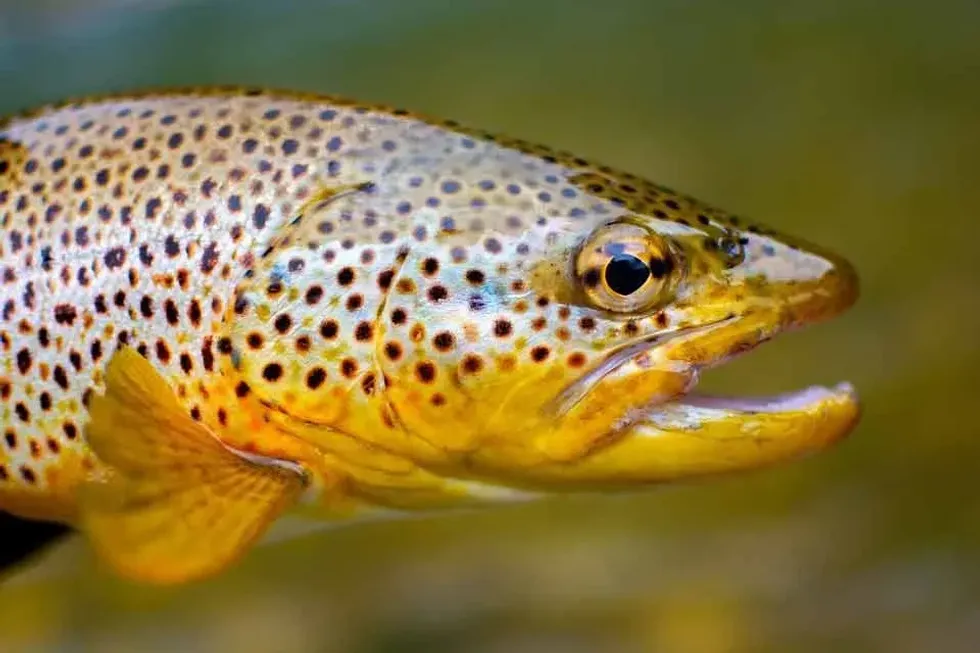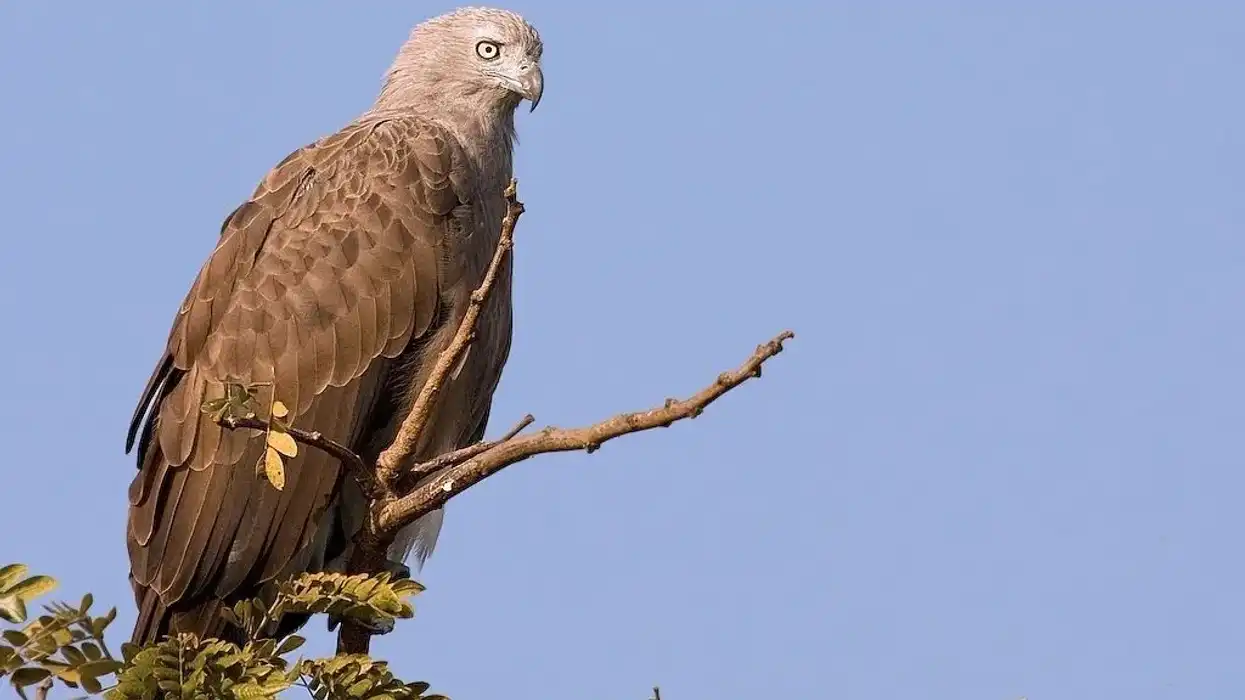Are you a lover of fishes and are inquisitive to know more about the brown trout? Then do check out this article.
Brown trouts are edible fishes that are quite popular and well known by people all across the globe. These fishes prefer staying in places where there are low water temperatures thereby making the place well oxygenated.
These fishes were originally native to the European water habitat and then were introduced to the entire world. These are fresh-water fishes that sometimes venture to the sea but again return home to their fresh-water habitat.
In comparison to an Atlantic salmon, the Atlantic salmon is much healthier than a brown trout, however, the trout is much tastier than the salmon. Brown trouts are game fish.
Game fish or game fishing refers to the sport where fishers or anglers catch these fishes as a sport. These fishes grow fast and are generally not aggressive.
Different species of trouts involve rainbow trout, sea trout, big brown trout, brook trout, and others. Often comparisons are made on a brook trout vs brown trout.
In comparison to brown trout, the brook trout is relatively small in size and also has fewer spots on its body. If you like this article do read this to the end to quench your thirst for knowledge. If you find our content interesting and informative do check out swai fish and drum fish.
Brown Trout Interesting Facts
What type of animal is a brown trout?
Similar to all trouts, the brown trout (Salmo trutta) is a fish.
What class of animal does a brown trout belong to?
The brown trout belongs to the class of Actinopterygii, which falls under Pisces or more commonly known as fish.
How many brown trout are there in the world?
There is no data or statistics which can give a figurative value or number regarding the populations of brown trout in the world. Brown trouts are edible fish and are enjoyed as a lovely dish and a delicacy in some places.
Since it is an edible fish its production and breeding are also taken care of. Moreover, since they are found in almost every continent on our planet, we can safely conclude that there is an abundance in the populations of brown trout on planet earth.
Where does a brown trout live?
The brown trout (Salmo trutta) are shallow swimmers and prefer cold water more than warm waters. They are thus found maximum in Alpine streams, lakes, and rivers. Brown trouts are found in all the continents of the globe and are thus a very common fish for humans.
What is a brown trout's habitat?
Since wild brown trouts populations are fond of staying in cold waters, they are most usually found in the temperate regions of the earth. The brown trout habitat is mostly both the taiga and the tundra regions.
Brown trouts are also known to spawn in fast-moving waters like those of streams and rivers and thus those are the places where the brown trout are found the most.
Who do brown trout live with?
Since the brown trout or Salmo trutta belong to the family of trouts they do share similar characteristics and traits in their physical attributes as well as in their behavior. Trouts generally travel in groups or what is usually known as a shoal or school.
However, with the passage of time and when a trout or a brown trout mature enough, they prefer traveling and living alone.
How long does a brown trout live?
A wild brown trout can live for some long years and thus they have an average lifespan of around 20 years. This lifespan is quite high in comparison to that of normal trouts who generally live for around 11 years.
However, staying out in the wild offers few threats to the fish in the form of catching by humans or in the form of predatory attacks from other large animals.
How do they reproduce?
The brown trout reaches their sexual maturity at an age of around three to four years. Unlike other fishes, they don't die after spawning.
The usual spawning season for brown trouts is from the months of October to December. During the season of spawning the fishes travel from the streams to headwater areas where bottoms filled with gravels are found in abundance.
It is here where the male and female brown trout fish start building their nests.
Once the female lays the trout eggs, the male fish fertilize them, and then immediately the female fish covers the brown trout eggs under the gravel to protect them from other prey. Once the mating process is complete both the parent fishes travel back to their original alpine streams or lake.
What is their conservation status?
Though the brown fish is found in abundance all over the planet and is often self-sustaining in some lakes, rivers or steams they are also taken care of by breeders. The biggest advantage of self-sustaining fishes is that extra care need not be taken for them.
However, owing to the destruction of their natural habitat and climate change in great lakes, populations of these fishes are now listed as Least Concerned in the International Union for Conservation of Nature or IUCN's Red List.
Brown Trout Fun Facts
What do brown trout look like?
The brown trout is reddish-brown in color and is usually long in size. These fishes have an overly long and largemouth which originates after the eye and has fully developed teeth.
The body can also be greyish-blue in color and is marked with numerous dark spots all across the body. These medium-sized sport fish also sometimes have spotted heads and tails and they usually have a reddish colored adipose fin near their tails.
How cute are they?
Though fishes can be considered really cute by people, the brown trout on the other hand is a let-off. These fishes are not at all good-looking and can often be considered hideous owing to their physical appearance. Hence they cannot be considered cute animals.
How do they communicate?
Brown trout communicate with each other via pheromones. Pheromones are chemical substances that can attract animals of the other gender. The female brown trout releases the pheromones just before mating which is picked up by the male fishes. Then the male fishes become extremely aggressive and fight amongst themselves to select their mate.
How big is a brown trout?
The brown trouts are usually long and elongated-shaped fishes and they have an average length that has a range from 16-31 in (40-80 cm). The average length of a normal trout lies in the range of 20-30 (50.8 - 76.2 cm).
Thus we can see that the brown trout falls well within the average range in length and thus is a perfectly medium-sized fish.
How fast can a brown trout swim?
In general trouts are fast swimmers. Brown trouts are no exception to that.
There is no data available which states the speed of a brown trout, but we can try our general reasoning to find the answer. Though they prefer swimming in shallow waters they usually live in fast water bodies where the water current is exceedingly high.
Hence to move against or in such high current steams, the fish must be pretty fast and thereby it survives the effect of the current.
How much does a brown trout weigh?
The brown trout weighs around 2.2-50 lb (1-20 kg) on average. These are however, medium-sized fishes but some fishes can grow even bigger in size and weight.
On average, a normal trout weighs around 13.2 - 26.45 lb or 6 - 12 kg, so we can say that the brown trout falls well under the category of a medium-sized fish.
What are their male and female names of the species?
Fishes don't have any specific name based on their gender and thus as a result both males and females are referred to as fish.
What would you call a baby brown trout?
A baby fish is called a fry. So in the case of a brown trout, a baby fish would be called a brown trout fry.
What do they eat?
Brown trouts are carnivores and their diet is to prey on other small invertebrates like crayfish or snails. Apart from these their diet consists of water worms, zooplankton, and other small fishes. Once they grow large in size their diet often resolves to cannibalism where they feed on the flesh of the same species.
Do humans eat them?
Yes, humans absolutely enjoy eating brown trout species as it offers many health benefits apart from being extremely tasty. Usually, people tend to eat small brown trouts as some people consider the large brown trout to have a strong particular flavor.
Would they make a good pet?
The brown trout is a fish that is found in the alpine streams, lake, and rivers, and is also an active fish. Keeping this carnivorous fish as a pet might just not be a good idea as it is considered illegal in many places.
Did you know...
The brown trout is an active part of sports fishing in many countries like Bhutan, the United States, Australia, and others. Initially, the species was restricted to Europe and after some time it was introduced in other parts of the world.
Introductions in South Africa took place in 1890 while in 1909 it happened in Kenya. These fishes were also introduced in the Himalayas of Asia during 1868. The brown trout is a widely popular fish and has its references in early literary works.
What was the biggest brown trout ever caught?
The world record brown trout for the largest and biggest brown trout that was ever caught was in 1992 in Little Red River when the fish weighed a gigantic 40.4 lb.
When were brown trout introduced to Yellowstone?
Being a native to Europe, the brown trout was non-native to North America and was thus introduced to North America in the latter part of the 19th century. It was introduced to Yellowstone in the year 1890 when the lakes Shoshone and Lewis received this fish.
Here at Kidadl, we have carefully created lots of interesting family-friendly animal facts for everyone to discover! Learn more about some other fish including bonito fish, or toadfish.
You can even occupy yourself at home by drawing one on our brook trout coloring pages.









